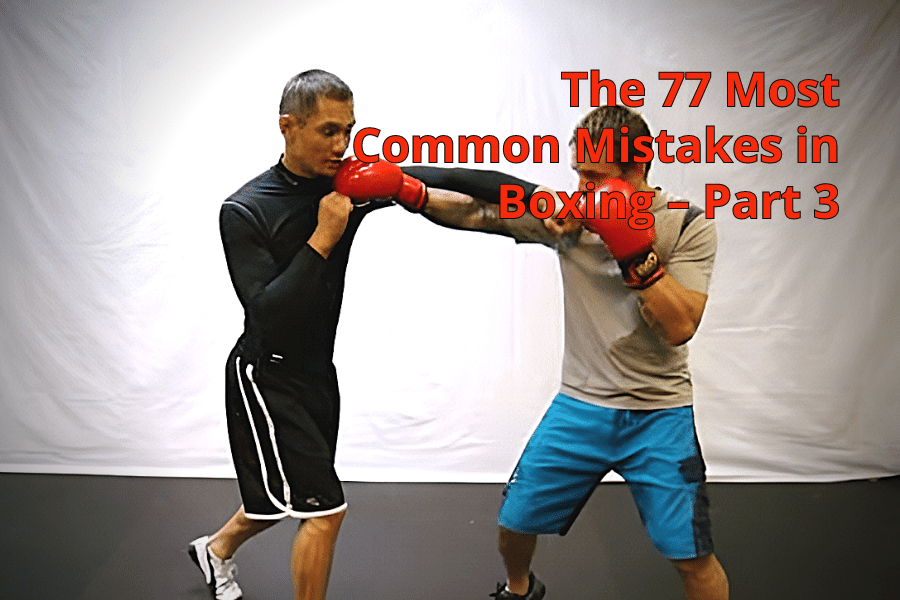
Table of Contents
- BOXING MISTAKE 34- Hooks: Too Big and Looping or Too Close and Chopping
- BOXING MISTAKE 35- Hooks: Not Doing the Nunchuck
- BOXING MISTAKE 36- Hooks: Wrong Range
- BOXING MISTAKE 37- Hooks: Not Covering the Body
- BOXING MISTAKE 38- The Body Shot: Not Setting It Up
- BOXING MISTAKE 39- Hooks: Not Turning the Heel
- BOXING MISTAKE 40- Upper Cuts: Not Turning the Heel
- MISTAKE 41- Upper Cuts: Loading Up
- MISTAKE 42- Upper Cuts: Not Punching With the Legs
- MISTAKE 43- Head Movement: Eyes Down
- MISTAKE 44- The Washing Machine
- MISTAKE 45- Stance: Feet Too Far Apart
- MISTAKE 46- Only Using Singular Direct Attacks
- MISTAKE 47- Singular Counters
- MISTAKE 48- Not Using Proper Counter Timing
- MISTAKE 49- Jab: Just Hitting With It
- MISTAKE 50- Fakes: Letting Him Touch Your Hand
- MISTAKE 51- Mimicking Your Opponent
- MISTAKE 52- Not Breathing
- MISTAKE 53- Exhaling: Always Making a Sound
- MISTAKE 54- Poor Posture: #1 Most Important Thing.
- MISTAKE 55- Getting Hit
- Continue Reading
Make sure to start reading here:
The 77 Most Common Mistakes in Boxing – Part 1
BOXING MISTAKE 34- Hooks: Too Big and Looping or Too Close and Chopping
When you throw a hook, you want to hug a big tree. This is the perfect degree of bend for your elbows.
That is, the angle of your elbow when you launch a Hook ought to be a bit more than 90 degrees.
A common mistake is that people throw the Hook with the elbow extended too far – this creates a big wide hook that is too easily perceived by your opponent.

As well, you’ll wind up hitting the target with your door knocker knuckles (the knuckles you knock on a door with) instead of the primary knuckles of your fist. This will probably snap your wrists back and could potentially cause a wrist injury.
In addition, many people bend their elbows too much and have their fist too close to their body when they throw Hooks.

Because of the rotational nature of the Hook, if thrown with the hand too close to the body and with too much flexion in the elbow, it will be like choking up too high on the handle of a bat, rather than gripping the bat at the tail end: you won’t generate as much power. The longer the lever, the greater the resultant velocity of the end of the bat. With too much flexion in the elbow – it looks like you are hugging a really narrow, skinny tree – you won’t have as much leverage to generate the subsequent velocity of the punch.
Again, the ideal degree of flexion in your elbow when throwing a hook is about 90 degrees.
BOXING MISTAKE 35- Hooks: Not Doing the Nunchuck
Why is the nunchuck (a martial arts weapon made famous by Bruce Lee – it basically looks like two little sticks joined together in the middle by a little bit of chain) more devastating than just a normal stick and how does this relate to a left hook in Boxing?




Well, it’s called the conservation of angular momentum. This principle refers to momentum remaining at a constant rate as an object rotates around a pivot point even if the length of the lever, in this case the arm, were to change. To maintain the same degree of angular momentum the velocity increases as the arm shortens.
This is why figure skaters suddenly spin faster as they pull their arms in.
And this is the reason why, if you close your hook up just a little bit at the end by pulling your hand in and flexing your elbow, you will generate far more velocity for your hook with very little additional effort.
The mistake here is that many people do not pull their hand in and rake in at the last moment for their hooks.
BOXING MISTAKE 36- Hooks: Wrong Range
In Boxing, there are 3 ranges:
Long Range – Straight left, straight right, full extension of the arm at the moment of impact.
Mid Range – hooks, upper cuts, short rights and short lefts. If I were to slip a straight left and my head was at his elbow during the full extension of his arm, I’m now in mid range.
Close Range – shoulder to shoulder boxing, clinching. I can hit the body with hooks and uppercuts, but I would need to back up to generate enough power to properly attack the head.
Many people are not aware of these distance changes during a fight and attempt to launch a hook at a long range with out first stepping into mid range. Understand that hooks are a mid or a close range tool.
You will probably wind up hitting him with your door knocker knuckles if you launch a hook from long range.
BOXING MISTAKE 37- Hooks: Not Covering the Body
When many people launch hooks, they are familiar with covering their head with their other hand in case their training partner launches a counter hook.
But, many people fail to cover up their rib cage as well.

You need to connect your elbow to your hip and your hand to your temple and cover up the entire one side of your body as you launch a hook. You want to cover up the entire side, not just the head, not just the body – people typically only do one or the other.

Hunch your back, slouch, crunch over so your elbow reaches your hip as your hand stays on your head. Give him as few options to counter attack as possible.
BOXING MISTAKE 38- The Body Shot: Not Setting It Up
A body shot is always dangerous because you can be countered by a powerful overhand punch.

People typically attack the body by going directly for the target. This works, but there is 3 different ways to attack the body and this is only one of them.
The first way is the aforementioned direct shot. This means that I see an opening and I drop my elevation and strike the body. Typically, you have to be very fast and explosive to execute this type of an attack.
The second way is to set it up. Divert their attention high and then go low to the body. For example, high left jab, high right hand, low jab to the body.
The final way to go to the body is as a counter attack. As your training partner goes for a high jab, you slip his jab and throw a jab of your own to his rib cage.
BOXING MISTAKE 39- Hooks: Not Turning the Heel
When it comes to proper form for the hook, one of the most common flaws is not turning your left heel when you throw a left hook and the same for a right hook.
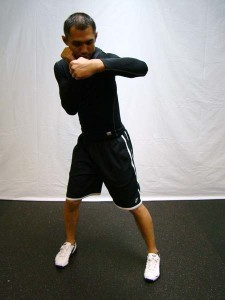
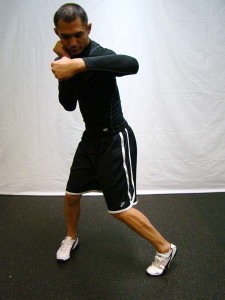
Heel rotation is important to facilitate hip rotation which powers the hook.
If someone keeps their heel to the ground they are only hitting with the power generated by turning their shoulders.
When executing a hook you want to take advantage of the powerful leg muscles and the rotating force of the hips.
Lift your heel, rotate your hips and watch the power of your hips blow through the roof.
BOXING MISTAKE 40- Upper Cuts: Not Turning the Heel
Many people fail to turn the heel as they execute the upper cut.
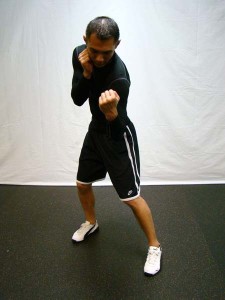
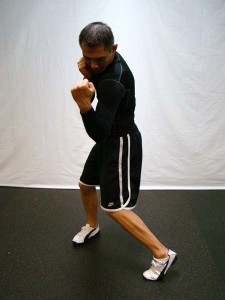
If you throw a right upper cut, you need to turn your right heel.
People fail to realize that not only are you using your legs and your back to generate the upward force of the upper cut, this force development is also assisted by hip and shoulder rotation.
Turn your heel to facilitate hip rotation and you’ll improve the power of your uppercut.
MISTAKE 41- Upper Cuts: Loading Up
Many people make the common mistake of loading up their hand by bringing their fist down to their hip before executing the upper cut.
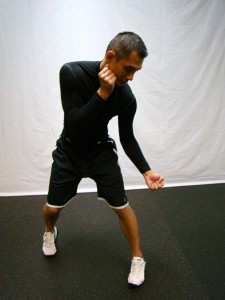
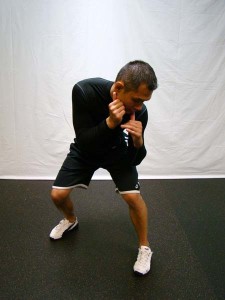
This is a very dangerous error as it opens you up for a counter hook.
And at the very least it will show your training partner that you are about to launch the upper cut and he’ll easily defend it.
Remember if you want the punch to land, you have to make the punch invisible. The upper cut is a very short punch. Power is developed in a very short and tight amount of space. About 6 inches.
MISTAKE 42- Upper Cuts: Not Punching With the Legs
Many people execute the upper cut without first dropping their hips to load up the legs. This is a mistake.

You need to power the upward motion of the upper cut with your legs and with your back.
As well, you need to get underneath the target to properly place the uppercut.
Finally, if you are just dropping your hand, this telegraphs the uppercut and leaves you open for an easy hook counter.
Keep your hands up to your face and bend your knees to lower your elevation. Now you’ll have power and the proper position to launch your upper cut.
MISTAKE 43- Head Movement: Eyes Down
A common mistake as people move their head to evade punches, whether slipping, ducking or weaving, is to look to the floor.


This mistake will make you more open to counter attacks.
You need to maintain you focus up at his chest as you move your head to make him miss.
You should always expect your training partner to launch additional punches and try to hit you as you are slipping. So, after you’ve made his straight right hand miss with a well timed slip, expect him to counter attack your slip with a well timed left hook.
By keeping your eyes up you’ll be able to see the counter hook and defend it.
MISTAKE 44- The Washing Machine
When people throw combination punches with multiple punches that require hip rotation they will do what I call the “washing machine”.
This common mistake occurs as people attempt to turn both heels at the same time.

Remember, with each punch requiring rotation – and all punches do except for the jab -there is a planted foot and a power foot.
The planted foot has the heel to the ground. The power foot has the heel up off the ground to facilitate rotation.

If you leave your heel on the ground as you try and rotate, there is too much friction between your shoe and the floor and you’ll probably sprain your knee if you forcefully try to rotate over.
So one heel down and one heel up. The mistake is when you try to turn both heels at the same time.
You will most certainly be off balance.
MISTAKE 45- Stance: Feet Too Far Apart
People will often have their feet too far apart or their feet too close.
The best way to check if the distance between your feet is sound is to get into your stance and bring your rear, right knee to the floor.
If your right knee touches your left ankle, then that is the perfect distance for your feet.

If your feet are too close together, you will lose balance and punching power. If your feet are too far apart, you will lose mobility.
MISTAKE 46- Only Using Singular Direct Attacks
Whenever people start sparring, they typically attack using only singular attacks in a direct manner. No fakes. No combination attacks.
Just a jab and then they dance away.
Maybe a big power shot, like an overhand right, and then dart out of range again.
This is a mistake.
Singular direct attacks have their place. Maybe to gauge and to figure out your opponent or to bait a counter attack so you can re-counter it.
For the most part, people do not understand this. They attack in a singular manner because they are not conscious of how they are attacking.
Singular direct attacks are the easiest type of attacks to counter. As well, they will hardly ever land because they are the easiest form of attack to defend.
Unless it is thrown non-telegraphically, and unless there is an apparently clear opening, a singular direct attack will not work. Utilize fakes and high combination strikes and your attacks will be more successful.
MISTAKE 47- Singular Counters
Many people, when they counter attack, go for just the one punch. When they score with it, they back out and do not follow up. This is a mistake.

If you can counter attack him and it lands, he is now at a moment of vulnerability. Follow up your counter attack. Maintain the offensive momentum. Throw a logical combination dictated by your distance, your body positioning and his body positioning, and attack, attack, attack.
MISTAKE 48- Not Using Proper Counter Timing
Counter timing is when to hit back when he tries to hit you. Many people try to counter attack. This is a good thing. But many people do not see that there are 3 different moments in time to counter attack:

Before, during, and after.
Before the punch is thrown. This is the conception of the punch. Counter punching at this moment is typically done as an attack on a telegraph. As your opponent draws his right hand back to telegraph his right overhand punch, hit him right away before his right hand even starts to move forward. This is what I call Timing # 3.
During the punch. As his arm extends for the punch, it is a fantastic moment to counter attack. Because his arm is out and extended, the whole one side of his body is open, as is the one side of his face. During the punch, people are not thinking defense. It is all about attack. They are most open to counter attacks at this moment. I call this Timing #2.
After the punch. This is the retraction of the punch. This is the most typical moment that people counter attack. People will see a punch coming at them, they’ll defend it and then they’ll counter it. By the time they try and counter it, the punch is in its retraction stage. This is called Timing #1 because it is the most commonly used type of counter timing.
A counter puncher needs to understand that there are 3 moments in time in which to counter attack. You need to understand it, you need to control it, and you need to use the right type of counter timing for the right person. The mistake is that many people just try and hit back, and hit back blindly, and they do not use the 3 phases Counter Timing to their advantage. Typically, when people throw counter attacks blindly, they will wind up throwing the counter during the retraction of the strike (timing #1).
MISTAKE 49- Jab: Just Hitting With It
People, typically, only use the jab to hit with. That’s it. And that’s fine. The jab is an attacking tool. However, the jab can also be used for many other things.

There’s an acronym that I use to describe the purpose of the jab. I call it Jab ADDA – Attack, Distance, Distance, Ask.
Attack – means to simply hit him with your jab. Punch him in the face. If the opportunity is there, if he is not protecting himself, then just hit him. Mindlessly punching people with the jab is what 90% of people do when they start to spar.
Distance – The jab can be used to gauge distance. To see how far away your opponent is. Sometimes it is hard to tell just by looking. Throw out your jab to see if you can hit him. You are trying to gauge the distance to see if you need to step in or not with your second punch.
Distance – You are also using your jab to keep the distance. Sometimes you’ll have people who will charge right into you. They’ll want to get in close. Maybe they have no sense of distance and they are always coming forward with their attacks. Throw the jab out right into their face. The jab will slow them down, make them hesitate, or cause them to stop coming forward all together.
Ask – The jab is also a probing tool. You are asking questions with your jab and you are waiting to see their response or answer. When you throw the jab, do they defend? If so, how are they defending? Are they counter attacking? Is there a pattern to how they are counter attacking? How are they emotionally responding to your jab? Are they angry? Are they nervous? Or are they super relaxed? As you ask questions with your jab, you are probing to gather information to use in formulating your attack strategy.
MISTAKE 50- Fakes: Letting Him Touch Your Hand
The faking process has 3 parts.
The first part is the fake. The movement that looks like a real attack but is only used to trigger a defensive response from your opponent, typically a defensive move like a block or parry.
The second part is the disengagement. Pulling your hand away as soon as you’ve triggered the defensive response from your training partner. When the person moves to block the fake, he’ll open himself up. Now you’ll have an open opportunity for a real attack.
The third part is the real attack. Now that your training partner has attempted to defend your fake or false attack, he is now open for a real attack.
The problem occurs with the time between the first phase of the fake and the second phase.
Most people will make their fake too long. Too long meaning they’ll leave their hand out to bait the block or parry for an extended period of time and the block will touch their hand.
If you let the block touch your hand, the fake has worked but the real attack will fail.
You need to trigger the block with the fake but before he is able to touch your hand with the block, you need to stop moving the faking hand and launch a real attack. Otherwise, the real attack will not land.
If his hand touches your hand during the fake, he will have enough time to bring his hand back up to defend the real attack.
MISTAKE 51- Mimicking Your Opponent
We often fall into the trap of mimicking our opponent. This is a flaw.
As an instructor, I see it all the time: when one guy gets hit with a hard right hand, in just a few seconds you’ll see a right hand from the other guy. This is a trap we all fall into.

If I get hit with a left hook, an internal dialogue goes off and says, “Oh yeah?! I’m going to hit you with a left hook of my own and it’s going to be harder and faster than yours and you aren’t going to be able to take it as well as I do.”
This is silly, but this is what we all do.
If your training partner or opponent understands this, then you’ll be susceptible to an easy counter attack because he’ll be waiting for your retaliation
MISTAKE 52- Not Breathing
Many people fail to exhale with each punch. This is a mistake. You need to exhale with each punch. Not only will it extend your endurance – you will suffer an oxygen deficit if you hold your breath through a high number punching combination – but it will also enhance your punching power.
When you exhale for each punch you want to tighten your abs as well. Contract your abdominal muscles with each breath. This is important because your abs complete the chain of force from the floor to your legs to your hips, through your abs into your shoulders and then into your arm and fist. This kinetic pathway is the secret to punching power.
If your abs are loose and relaxed, you will only be punching with your shoulders and your arms. Still a powerful punch, but it will not have the maximum devastation that we as martial artists strive for.
Your abs have to be rock hard to transmit the power developed through your legs pushing into the floor which forces your hips to rotate, to further drive your shoulders and then propels your arm and your hand forward. Your abs need to be conditioned so they can solidify in an instant.
Breathing and exhaling with each punch is what facilitates the abdominal contraction.
MISTAKE 53- Exhaling: Always Making a Sound
A common mistake is that people feel they need to make a sound each time they exhale with a punch.
This is a mistake commonly made as people try and mimic professional fighters on pay- per-view.
The only reason I tell my students to make a sound each time they breathe is so that I know they are exhaling with each punch. Breathing out loudly is really more for the coach than it is for the athlete.
You can absolutely exhale with each punch without making a noise and it will not affect your punching power. *
If fact, it’s better for you not to make a sound as you exhale with each punch because the audible signal of each breath is information your training partner can use to decipher your punching patterns.
For instance, if you are breathing out for singular attacks and I can hear you exhale with each punch, but when you throw combination punches I only hear you exhale on your last punch, that means you are holding your breath throughout the combination and you’re only exhaling once at the end of the combo.
As a tactic, I’ll drop my hands a bit to let you fire high number combinations at me. I’ll do everything I can to stay safe. Granted, this is a risky tactic because I could get hit; however, I believe this will pay off with you tiring quickly because you are not breathing properly. It’s like you are sprinting and holding your breath.
Another way to take advantage of this breathing pattern is to counter attack you only when I hear you exhale with the punch. If I don’t hear a sound attached to your first strike, I know to expect a follow up punch immediately and I’ll prepare my self to defend the combination. If I do hear a sound with the first punch, I know it’s a singular attack and I can counter attack with ease knowing I won’t walk into a one of your secondary attacks.
So, the sound you make as you exhale is more for the coach to know that you are breathing properly as you are throwing punches. That’s it. It has no significance in relation to performance.
When sparring, keep your breathing quiet, so you do not give your opponent any further hints as to what you’re going to do.
MISTAKE 54- Poor Posture: #1 Most Important Thing.
Fighting is all about maintaining your posture and trying to take away your opponent’s posture.

Posture – having your knees slightly bent and keeping your head directly over your feet – is the universal “ready” position in virtually every sport.
Whether you are guarding someone in Basketball, or receiving a serve in tennis, or snowboarding – if you are standing and if you need to be athletic, this is the posture you need to maintain.
In fighting I, as your opponent or training partner, want to take you out of this posture, to get you to cower, to bend over and cover up, to turn away from me. From here your attacks will be weak, easily defended and non-threatening.
Conversely, I always want to keep my posture. As I am defending and countering, as I am moving in and out of range, I always want to keep my posture.
With my posture strong and intact, I can fire my punches. I am quicker, more responsive and more agile.
Watch videos of yourself sparring. Ask yourself, is my head too far back when I defend his punch? Is my head too far forward when I charge in to attack?
If you are out of posture, you have to do 2 things to fire an attack. One, get back into posture and two, fire the attack.
You have to “get set” and then “go”. When you fight we want to already be set up in good posture so that at anytime you can “go”.
MISTAKE 55- Getting Hit
Many people feel that is okay to get hit and that receiving repetitive trauma to the head is a natural and acceptable part of Boxing.
Understand that receiving repeated blows to the head is extremely dangerous.
Boxing is about hitting people to the head and to the torso. The sport of Boxing is the process of engendering fatigue, exhaustion and injury to your opponent.
Boxing is attempting to dismantle your opponent’s will to continue and part of this means disabling his central command center- his head.
Possible results from receiving repeated blows to the head:
Detached Retina. The retina is the back of the eye ball that converts what we see into useful information for the brain. Rips and tears in the retina occur when force is exerted on or around the eye. This is the injury that caused Sugar Ray Leonard to retire from Boxing.
Intercranial Hemorrhages. This is a ruptured blood vessel within the skull. Blood pouring into the skull creates pressure against the brain; and thus, compresses and destroys brain tissue. Intercranial Hemorrhages are caused by the brain crashing against the inside of the skull. Most fatalities in the Boxing ring are from Intercranial Hemorrhages and from their resulting complications.
Concussions. A concussion is a temporary impairment of brain function. A severe concussion is a knock out (a loss of consciousness). A moderate concussion is a loss of balance and a minor concussion is being dizzy and confused. Concussions can cause axons (cords that join brain cells) to become twisted, damaged and torn; thus, disrupted communication between brain cells.
Dementia Pugulistia. More commonly known as “Punch Drunk”, it is a syndrome found in 17% of retired professional boxers. It is signified by slurred speech and a loss of coordination and is the result of cumulative trauma to the head.
Cavum Septum Pellucidum. The human brain has two large halves. Repeated blows to the head slowly causes a cave like space to grow between the two halves of the brain.
This space between the two parts of your brain can cause slurred speech, reduced motor control, and muscular weakness.
Sparring is an essential component to learning how to Box. There are multiple ways to train in order to functionalize your Boxing skills. There are many different sparring methods and doing a full power sparring session is just one way.
When training a dangerous Martial Art such as Boxing, you want to attain the skill without allowing the learning process to injure and destroy you at the same time.
There are numerous drills students can do to learn proper timing and distancing while still maintaining a high level of safety.
Continue Reading
- The 77 Most Common Mistakes in Boxing – Part 1
- The 77 Most Common Mistakes in Boxing – Part 2
- The 77 Most Common Mistakes in Boxing – Part 3
- The 77 Most Common Mistakes in Boxing – Part 4


